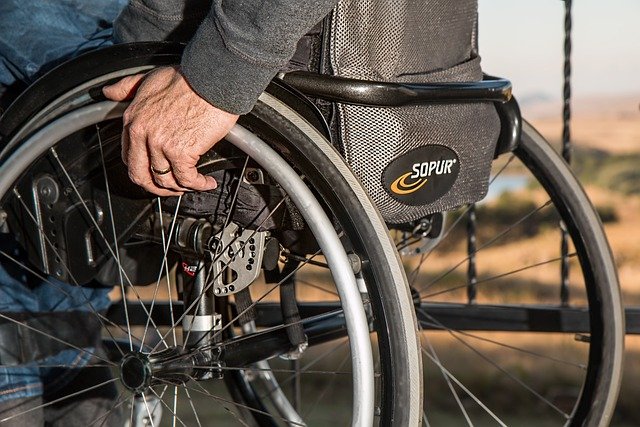A Comprehensive Guide to Enhanced Personal Mobility
For individuals seeking independence and freedom in their daily activities, electric-powered personal mobility devices have become essential tools. These vehicles offer practical solutions for those with limited mobility, whether due to age, injury, or medical conditions. Understanding how to select, maintain, and safely operate these devices can significantly enhance quality of life and ensure long-term satisfaction with your investment.

For millions of people worldwide, personal mobility devices represent more than just a mode of transportation—they symbolize autonomy, confidence, and the ability to participate fully in everyday life. As these devices continue to evolve with improved technology and design, knowing how to make informed decisions about selection, care, and usage becomes increasingly important.
How to Choose the Right Mobility Scooter for Your Needs
Selecting an appropriate mobility device requires careful consideration of several factors. First, assess your primary usage environment. Will you primarily use the device indoors, outdoors, or both? Indoor models typically feature compact designs with tight turning radiuses, while outdoor versions offer larger wheels, enhanced suspension, and greater ground clearance for uneven terrain. Weight capacity is another critical specification—most models accommodate between 250 and 500 pounds, so verify that your chosen device provides adequate support. Battery range matters significantly, especially if you plan extended outings. Most travel between 10 and 30 miles per charge, depending on terrain, rider weight, and battery quality. Consider portability requirements as well. Travel models disassemble into manageable pieces for car transport, whereas full-sized versions require vehicle lifts or ramps. Seating comfort, armrest adjustability, and control placement should align with your physical needs and preferences. Finally, evaluate additional features such as storage baskets, headlights, horn functionality, and weather protection options that enhance convenience and safety.
Understanding the Benefits of Mobility Scooters for Daily Life
Personal mobility devices deliver numerous advantages that extend beyond basic transportation. Independence ranks among the most significant benefits, allowing users to complete errands, attend social events, and maintain active lifestyles without relying on others for assistance. This autonomy often translates to improved mental health, reduced feelings of isolation, and enhanced self-esteem. Physical benefits include reduced strain on joints and muscles compared to walking aids, which proves particularly valuable for individuals with arthritis, cardiovascular conditions, or chronic pain. These devices enable participation in activities that might otherwise be impossible, from shopping trips to outdoor recreation. Many users report increased social engagement as their devices facilitate visits with friends and family, attendance at community events, and exploration of local areas. Economic advantages also emerge over time, as ownership can reduce transportation costs associated with taxis or specialized transport services. The psychological impact of maintaining independence cannot be overstated—users frequently describe renewed confidence and improved quality of life after acquiring personal mobility solutions.
Tips for Maintaining and Caring for Your Mobility Scooter
Proper maintenance extends your device’s lifespan and ensures reliable performance. Battery care forms the foundation of maintenance. Charge batteries fully after each use, even for short trips, and avoid allowing them to drain completely. Store your device in temperature-controlled environments when possible, as extreme heat or cold degrades battery performance. Clean regularly using mild soap and water, avoiding direct spray on electrical components. Inspect tires monthly for proper inflation and wear patterns—underinflated tires reduce range and handling. Check all connections, fasteners, and moving parts for looseness or damage during routine cleaning. Lubricate moving components according to manufacturer specifications, typically every few months. Test brakes regularly to ensure they engage smoothly and hold the device securely. Keep upholstery clean and protected from moisture to prevent mold and deterioration. Schedule professional servicing annually or as recommended by the manufacturer. Between professional visits, address minor issues promptly to prevent escalation into costly repairs. Maintain detailed records of all maintenance activities, which proves valuable for warranty claims and helps track component replacement schedules.
Safety Essentials for Operating Mobility Scooters
Safe operation protects both riders and pedestrians while maximizing enjoyment and confidence. Before each use, conduct a brief safety check: test brakes, verify battery charge, ensure lights function properly, and confirm tire inflation. Familiarize yourself thoroughly with all controls before venturing into public spaces. Start with practice sessions in safe, uncrowded areas to build confidence and muscle memory. Always observe posted speed limits and adjust your speed according to conditions—slow down on slopes, uneven surfaces, and in crowded areas. Maintain awareness of your surroundings, watching for obstacles, pedestrians, vehicles, and changes in terrain. Use designated pathways when available, and exercise caution when crossing streets or navigating parking areas. Avoid sharp turns at high speeds, which can cause tipping, and approach inclines straight-on rather than at angles. Never exceed the manufacturer’s recommended slope grade, typically around 6 to 10 degrees. Wear visible clothing in low-light conditions and use headlights and reflectors as equipped. Avoid using mobile devices while operating your device, as distraction significantly increases accident risk. Be mindful of weather conditions—rain reduces traction and visibility, while extreme temperatures affect battery performance. Consider enrolling in local training programs if available, as professional instruction builds skills and confidence.
Conclusion
Personal mobility devices offer transformative benefits for individuals seeking to maintain independence and active lifestyles despite physical limitations. By carefully selecting a device that matches your specific needs, committing to regular maintenance, and prioritizing safe operation practices, you can maximize the value and longevity of your investment. These devices represent far more than mechanical aids—they provide freedom, confidence, and opportunities for continued engagement with the world around you. Whether navigating indoor spaces, exploring outdoor environments, or simply maintaining daily routines, a well-chosen and properly maintained mobility solution can significantly enhance quality of life for years to come.




